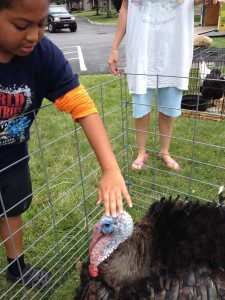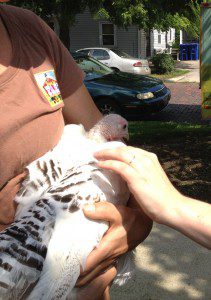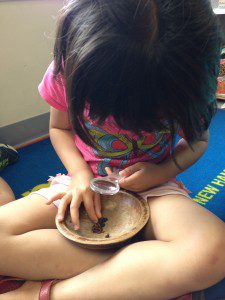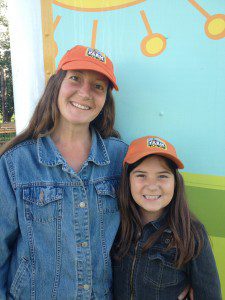This is our last week of summer programs – and wow – it’s been a whirlwind! We had 72 events and presentations around town! I can’t tell you how proud and excited I am by that!
This summer we taught in all the different nooks and crannies of central Ohio. And I learned one very important thing – this work is so important!
Let me give you an example why:

Seriously. I’m not making that up. And he wasn’t trying to be funny.
The librarian shared with me that many of their children never leave their neighborhood – ever. They don’t go to the zoo. They don’t visit the metroparks. And they’ve certainly never been to a farm.
That is an extreme example, but certainly not the only one.
At the Livingston Library, some teens were betting each other who was right about the identity of an animal. One girl was certain she was right, but I had to tell her that our giant (and gobbling) 50lb turkey was not a rooster. A short time later a middle aged woman asked me the same thing.
At a suburban Goddard School, a child of about 8 asked me if the rabbit was going to lay an egg while we were there.
Countless adults and children have shared that they had never before seen a live turkey. Adults have told me they didn’t know that roosters don’t lay eggs – or that roosters were chickens.
These in-person touches of animals are so valuable – and so needed.
When I first started this business, I was very sensitive to people calling us a petting zoo. Those words made me cringe because the experiences we provide are so much more than what that term has meant all my life.
Yesterday at a suburban Primrose School, the vibrant calendar in their lobby had a picture of a happy chicken with the words petting zoo under it. They meant us.

She experienced her fears in a safe and gentle way and then she walked through them. It reminds me of a magnet I have on my fridge that says “Do something everyday that scares you.” This business has been that challenge for me. And I realize that often times I’m offering that challenge to others, whether it’s by touching an animal or introducing them to a new experience or idea.
At a Kindercare this summer I taught a group of multiple ages about beekeeping. Afterwards, a young boy called out to his friends, “Let’s play honeybees!” And off they ran, buzzing and ‘flying’ around the yard. They were processing through play what they had just learned, embodying an insect that they beforehand may have feared.

In a Wool Spinning program this week at a Goddard School, not a single child could tell me what the plant was that they were all wearing. In a Dairy Delicacies program this morning, no one knew the difference between skim and whole milk.
Living in the city, we often forget – or never learn – that our lives depend on plants and animals and insects. We may not question what our food is or where it came from, or realize that we’re wearing a plant or an animal.
Connections are what make life meaningful for us. It helps us to appreciate that other lives participate in our own, sometimes in unseen ways.
That connection also helps us to not be afraid – to understand why worms are slimy or bees sting or turkeys gobble.
Through connection and understanding comes appreciation – and through appreciation comes respect and protection.
Yes, this is important work – and no matter what you decide to call what I do, I’m so proud to be able to do it.
And I hope that by sharing it with you, it will help your own connections grow, inspire you to walk through your own fears, and will help you appreciate each step along the way!
With love!
I’d love to hear from you! Comment below.


